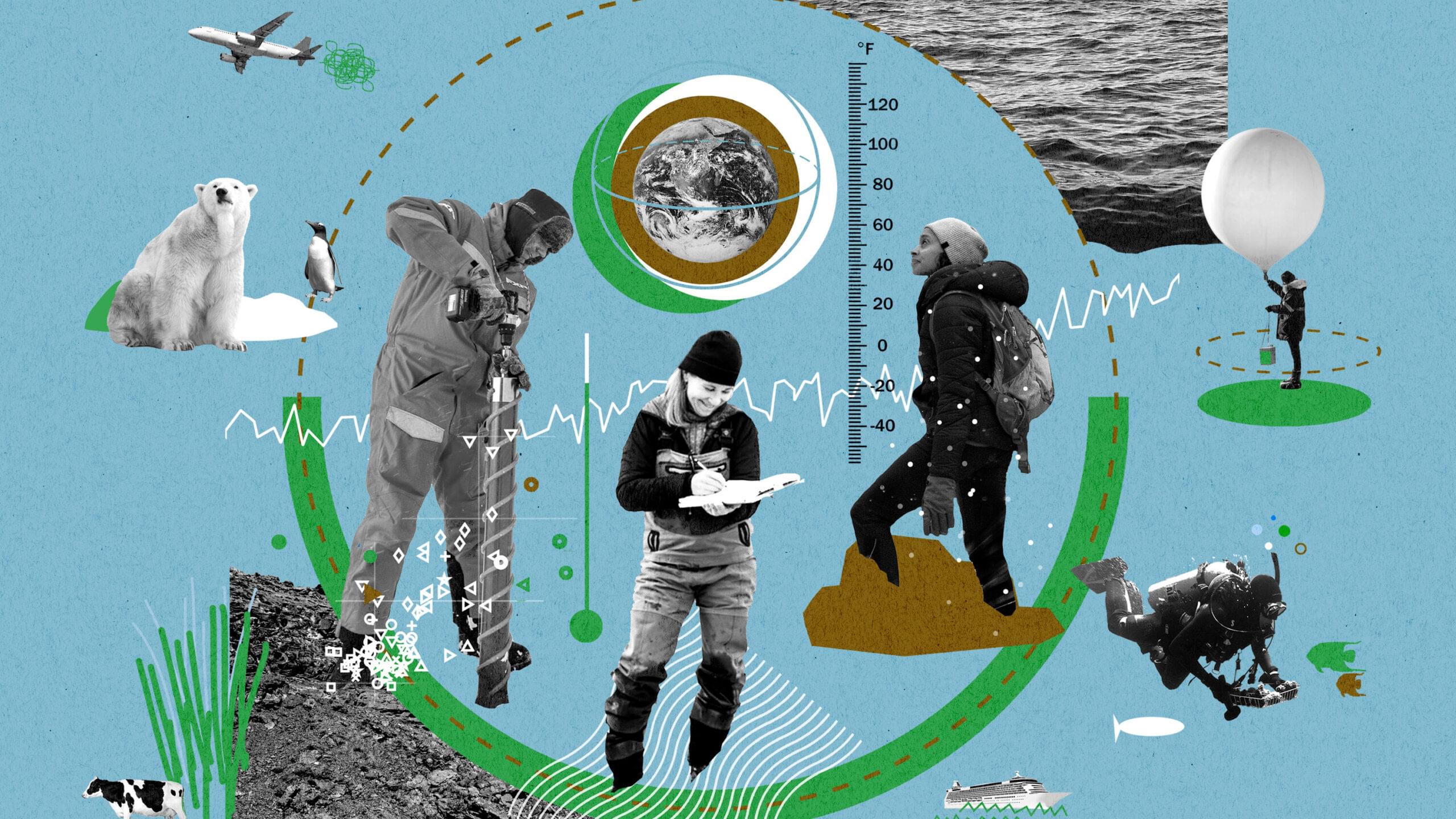The Science of Climate Change is more solid and widely accepted than you might think. However, the breadth of the subject, combined with widespread misinformation, can make it difficult to separate fact from fiction. We’ve done our best to provide you not only with the most up-to-date scientific information, but also with an explanation of how we know it.
How do we know climate change is occurring?
Climate change is frequently portrayed as a prediction made by complex computer models. However, the scientific basis for climate change is much broader, and models are only one part of it (though they are surprisingly accurate).
Sponsered5
Scientists have known for over a century that greenhouse gases such as carbon dioxide cause global warming. These gases constitute only a small portion of the atmosphere, but they have a significant impact on Earth’s climate by trapping some of the planet’s heat before it escapes into space. This greenhouse effect is significant because it explains why a planet so far away from the sun has liquid water and life!
During the Industrial Revolution, however, people began burning coal and other fossil fuels to power factories, smelters, and steam engines, which increased the amount of greenhouse gases in the atmosphere. Human activity has been warming the planet ever since.
We know this because of a mountain of evidence dating back to temperature measurements taken at weather stations and on ships in the mid-1800s. Later, scientists began tracking surface temperatures with satellites and searching geologic records for clues about climate change. These data tell the same story: the Earth is getting hotter.
Sponsered5
Since 1880, average global temperatures have risen by 2.2 degrees Fahrenheit, or 1.2 degrees Celsius, with the greatest increases occurring in the late twentieth century. Since the 1960s, land areas have warmed more than the sea surface, and the Arctic has warmed the most, by more than 4 degrees Fahrenheit. Temperature extremes have shifted as well. In the United States, daily record highs now outnumber record lows two-to-one.
This temperature increase is unprecedented in recent geologic history. A famous illustration, first published in 1998 and often referred to as the hockey-stick graph, depicts how temperatures remained relatively flat for centuries (the shaft of the stick) before abruptly rising (the blade). It is based on information gleaned from tree rings, ice cores, and other natural indicators. And the overall picture, which has withstood decades of scrutiny from climate scientists and detractors alike, shows that the Earth is hotter today than it has been in at least 1,000 years, if not much longer.
In fact, because the ocean has absorbed 90 percent of the heat trapped by greenhouse gases, surface temperatures actually conceal the true scale of climate change. Measurements taken by oceanographic expeditions and networks of floating instruments over the last six decades show that every layer of the ocean is warming. According to one study, the ocean absorbed the same amount of heat between 1997 and 2015 as it had in the previous 130 years.
Sponsered5
We also know that climate change is occurring because we see the effects all around us. While ice sheets and glaciers are melting, sea levels are rising. The Arctic sea ice is melting. Snow melts faster in the spring, and plants bloom earlier. Animals are migrating to higher elevations and latitudes in search of cooler temperatures. Droughts, floods, and wildfires have all become more severe. Many of these changes were predicted by models, but observations show that they are now occurring.
How much agreement is there among scientists about climate change?
There is no denying that scientists enjoy a good old-fashioned debate. When it comes to climate change, however, there is virtually no disagreement: Numerous studies have found that more than 90% of climate scientists agree that the planet is warming and that humans are the primary cause. This viewpoint is shared by the majority of major scientific organizations, ranging from NASA to the World Meteorological Organization. Given the contradictory, competitive nature of science, where questions like what killed the dinosaurs remain hotly debated, this is an astonishing level of agreement.
Sponsered5
Scientific consensus on climate change began to emerge in the late 1980s, when the influence of man-made warming began to outweigh natural climate variability. By 1991, two-thirds of earth and atmospheric scientists polled for an early consensus study agreed that anthropogenic global warming was real. By 1995, the Intergovernmental Panel on Climate Change, a notoriously conservative body that assesses the state of scientific knowledge on a regular basis, had concluded that “the balance of evidence suggests that there is a discernible human influence on global climate.” Currently, more than 97 percent of climate scientists who publish agree on the existence and cause of climate change (as does nearly 60 percent of the general population of the United States).
So, where did we get the idea that climate change is still being debated? Much of it was the result of coordinated messaging campaigns by companies and politicians opposed to climate action. Many people promoted the false narrative that scientists had not made up their minds about climate change. In an infamous 2002 memo to conservative lawmakers, Republican consultant Frank Luntz explained the reasoning: “Should the public come to believe that the scientific issues are settled, their views on global warming will change accordingly,” he wrote. Questioning consensus is still a popular topic of discussion today, and the 97 percent figure has become something of a lightning rod.
Some have pointed to the Global Warming Petition Project, which urged the US government to reject the Kyoto Protocol of 1997, an early international climate agreement, to bolster the falsehood of lingering scientific doubt. The petition claimed that climate change did not exist and that even if it did, it would not be harmful to humanity. More than 30,000 people with science degrees have signed it since 1998. However, nearly 90% of them did not study Earth, atmospheric, or environmental science, and the signatories included only 39 climatologists. Most were engineers, doctors, and others whose backgrounds had little to do with climate physics.
Sponsered5
A few well-known scientists continue to oppose the scientific consensus. Some, like Willie Soon, a Harvard-Smithsonian Center for Astrophysics researcher, have ties to the fossil fuel industry. Others disagree, but their claims have not been supported by evidence. One prominent skeptic, physicist Richard Muller, changed his mind after reevaluating historical temperature data as part of the Berkeley Earth project. The findings of his team essentially confirmed the results he had set out to investigate, and he came away convinced that human activities were warming the planet. “Call me a converted skeptic,” he wrote in a Times Op-Ed in 2012.
A few well-known researchers continue to oppose the scientific consensus. Some, like Willie Soon, a researcher affiliated with the Harvard-Smithsonian Center for Astrophysics, have ties to the fossil fuel industry. Others disagree, but their claims have not stood up to scrutiny. At least one prominent skeptic, physicist Richard Muller, changed his mind after reexamining historical temperature data as part of the Berkeley Earth project. His team’s findings essentially confirmed the results he had set out to investigate, and he came away convinced that human activities were warming the planet. “Call me a converted skeptic,” he wrote in a 2012 Times Op-Ed.
Is it true that we only have 150 years of climate data? What does that tell us about centuries of change?
Sponsered5
The climate of the Earth is inherently variable. Some years are hotter than others, some decades have more hurricanes than others, and some ancient droughts lasted centuries. Glacial cycles take millennia to complete. So, how can scientists conclude that humans are warming the planet based on data collected over a relatively short period of time? The answer is that the instrumental temperature data we have tells us a lot, but it is not the only data we have.
Historical records date back to the 1880s (and often earlier), when people began to measure temperatures at weather stations and on ships as they sailed around the world. These data show a clear warming trend throughout the twentieth century.
Some have questioned whether these records are skewed because a disproportionate number of weather stations are located near cities, which tend to be hotter than surrounding areas due to the so-called urban heat island effect. However, when reconstructing global temperatures, researchers routinely account for these potential biases. Furthermore, warming is supported by independent data such as satellite observations that cover the entire planet and other methods of measuring temperature changes.
Sponsered5
Much has also been made of the small dips and pauses that have punctuated the last 150 years’ rising temperature trend. However, this is simply due to natural climate variability or other human activities that temporarily offset greenhouse warming. For example, in the mid-1900s, internal climate dynamics and light-blocking pollution from coal-fired power plants temporarily halted global warming. (Eventually, rising greenhouse gas levels and pollution-control regulations caused the planet to warm up again.) Similarly, the so-called warming hiatus of the 2000s was caused in part by natural climate variability, which allowed more heat to enter the ocean instead of warming the atmosphere. Since then, the years have been the hottest on record.
Could the entire twentieth century have been one big natural climate wiggle? To answer that question, we can look at different types of data that provide a longer perspective. To extend the climate record, researchers used geologic records such as tree rings, ice cores, corals, and sediments that preserve information about prehistoric climates. The resulting picture of global temperature change is essentially flat for centuries before abruptly rising in the last 150 years. It has long been a target of climate deniers. However, study after study has confirmed the findings that the planet hasn’t been this hot in at least 1,000 years, if not longer.
Sponsered5




